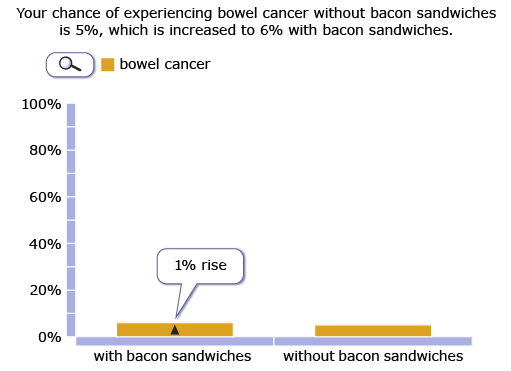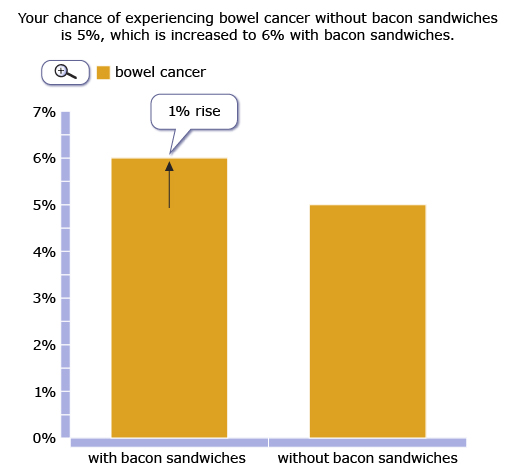Lesson 1
1. Lesson 1
1.9. Explore 5
Module 2: Probability
Many probabilities and odds are based on actual data and not just “some” number pulled out of thin air. Weather forecasts and cancer survival rates are some examples where the probabilities and the odds are calculated based on real information. These odds and probabilities are assessed and then used to make decisions for upcoming events.
Compare these same statistics that have been presented or framed differently. How does the framing affect your decision?
Column charts are again very popular, but as you see below, the perception of the importance of a change in risk can be manipulated by altering the scale of the column—the effect of eating bacon looks a lot larger in the second chart, yet it is the same 1% increase.


This material first appeared on the Understanding Uncertainty website http://understandinguncertainty.org.
Try This 4
- Find examples of statements of probability and odds found in the media, biology, sports, medicine, sociology, or psychology.
- Using an example from question 1, how would knowing this probability or these odds affect a decision you would make?
![]() Save your responses in your course folder.
Save your responses in your course folder.
Share 3
With a partner or in a group, share your examples from Try This 4 and provide an explanation of how knowing the probability and odds might affect a decision you would make.